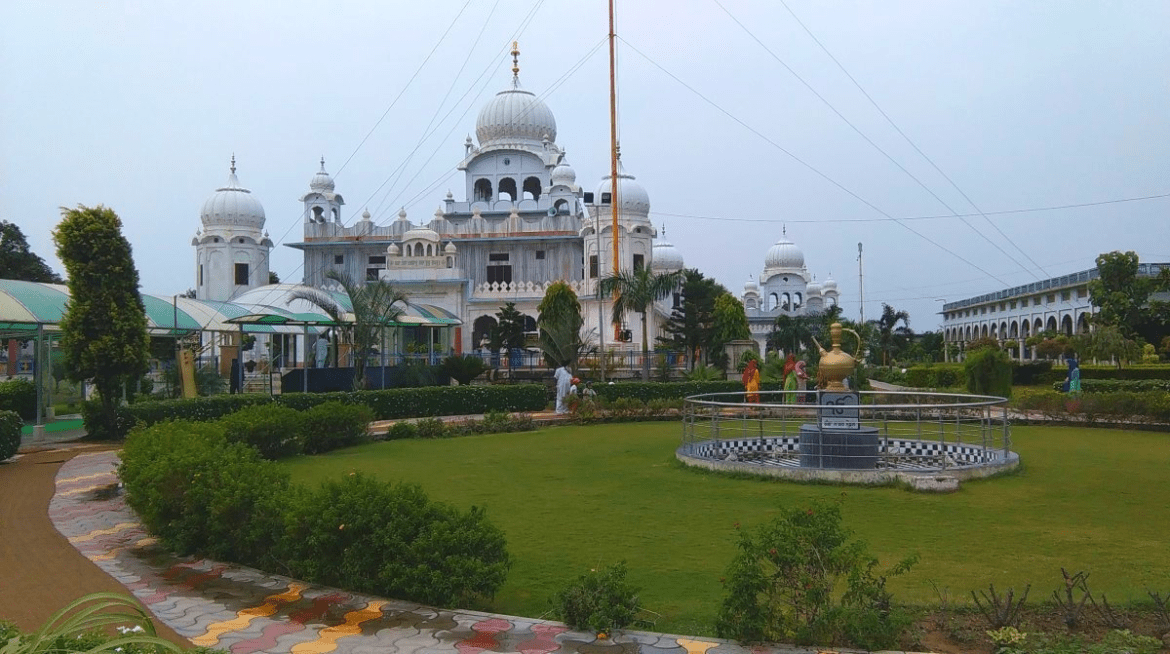AI Generated Summary
- As custodians of these legacies, the people of Raikot continue to honor and celebrate their vibrant history, ensuring that the lessons and memories of the past remain etched in the collective consciousness for generations to come.
- In a heartfelt gesture of gratitude, the Guru bestowed upon Rai Kalha a treasured set of gifts—a copper urn known as the Ganga Sagar, a finely crafted sword, and a wooden rehal.
- From the hallowed grounds of Gurdwara Tahliana Sahib to the evocative walls of Bassian Kothi, the town invites visitors and locals alike to reflect on a past marked by courage, sacrifice, and unwavering faith.
Nestled on the outskirts of Ludhiana, the modest town of Raikot is a hidden gem steeped in Sikh history and enduring traditions. Despite its small size, Raikot’s legacy stretches back centuries, intertwining faith, valor, and poignant chapters from the region’s turbulent past.
A Sacred Sojourn
Raikot’s origins date back to 1648 when Rai Ahmad founded the town. Over the years, it became a cherished waypoint for Sikh luminaries. Among them, Guru Gobind Singh, the revered 10th Sikh Guru, is remembered for his brief sojourn under a grand Tahli tree—a moment of respite that gave birth to the sacred Gurdwara Tahliana Sahib. This holy site commemorates the Guru’s presence and the enduring bond between the town and Sikh spirituality.
Hospitality Amidst Peril
The town’s history is marked not only by its spiritual significance but also by stories of gallantry. In the early 18th century, during the oppressive reign of Aurangzeb, Rai Kalha III, then the chief of Raikot, risked his life by extending warm hospitality to Guru Gobind Singh. In a heartfelt gesture of gratitude, the Guru bestowed upon Rai Kalha a treasured set of gifts—a copper urn known as the Ganga Sagar, a finely crafted sword, and a wooden rehal. These artifacts not only symbolize valor but also echo the deep respect between a ruler and a spiritual guide.
For generations, the Ganga Sagar remained a symbol of that fateful encounter. Until 1947, it was carefully displayed by Khan Bahadur Rai Inayat Khan. Today, the sacred urn resides with Rai Azizullah, the former Member of Parliament from Pakistan and the grandson of Khan Bahadur Rai Inayat Khan. As the custodian of this family heirloom, Rai Azizullah continues to preserve the legacy of bravery and devotion. Residents like Ajaib Singh of Leel village recall the recent public display of the Ganga Sagar at Gurdwara Tahliana Sahib, a moment that rekindled local pride and reverence.
The Haunting Legacy of Bassian Kothi
Another emblem of Raikot’s historical tapestry is the imposing Bassian Kothi, a 200-year-old structure with a story of sorrow and survival. This venerable building once served as a temporary prison for Maharaja Duleep Singh—the last scion of the illustrious Sikh dynasty. The young Maharaja, son of Sher-e-Punjab Maharaja Ranjit Singh and the sole heir of Maharani Jind Kaur, spent a night in captivity within these walls before being exiled to Britain by the British colonial authorities.

Today, Bassian Kothi has been reborn as a memorial that offers visitors a profound glimpse into the life and trials of Maharaja Duleep Singh. The site now houses an interpretation centre, a museum, and an amphitheater adorned with busts and statues, each telling the tale of a once-mighty ruler whose destiny was irrevocably altered by colonial ambition.
Local lore even hints at the building’s unique construction—rumors of lime and jaggery binding Nanakshahi Lahori bricks together add an almost mythic quality to its history. Over the years, the structure has seen many uses, from serving as a rest house after Independence to providing shelter for BSF jawans during Operation Blue Star. Each chapter in Bassian Kothi’s long life contributes to its role as a living monument of resilience and remembrance.
A Living Legacy
Raikot stands today as a living testament to the rich spiritual and historical heritage of the region. From the hallowed grounds of Gurdwara Tahliana Sahib to the evocative walls of Bassian Kothi, the town invites visitors and locals alike to reflect on a past marked by courage, sacrifice, and unwavering faith. As custodians of these legacies, the people of Raikot continue to honor and celebrate their vibrant history, ensuring that the lessons and memories of the past remain etched in the collective consciousness for generations to come.




